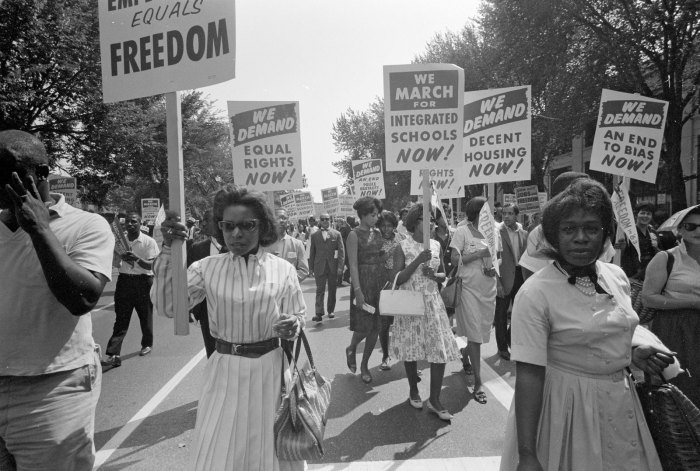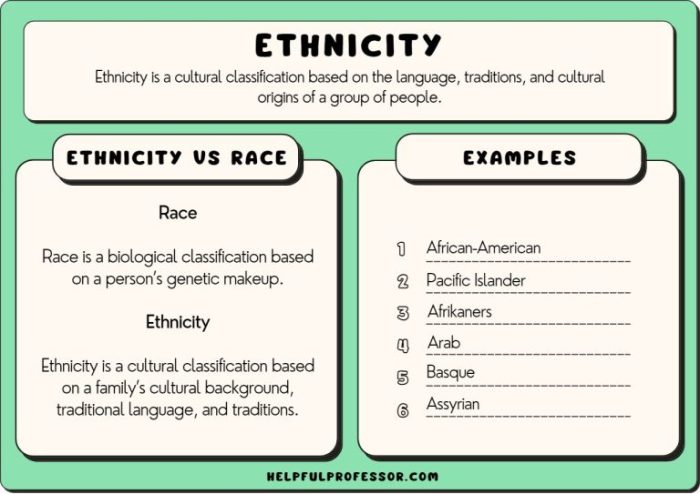
What are segregation laws? They are a stark reminder of humanity’s capacity for prejudice and discrimination. These laws, enacted throughout history, aimed to separate and marginalize groups based on race, ethnicity, religion, or other factors. They have left an enduring legacy, shaping social structures, institutions, and cultural norms even today.
From the Jim Crow laws in the American South to the apartheid regime in South Africa, segregation laws have taken many forms. They have manifested as legal codes, social customs, and even unspoken rules that enforced separation and inequality. This exploration delves into the historical roots, various types, and enduring impacts of segregation laws, examining their social and economic consequences and the legal battles waged to dismantle them.
Types of Segregation Laws

Segregation laws were enacted in various countries to enforce the separation of people based on their race, ethnicity, religion, or other characteristics. These laws aimed to create and maintain social, economic, and political inequalities, often leading to discrimination and prejudice. This section explores the different types of segregation laws based on their purpose and scope, highlighting their specific provisions and impact on various groups.
Types of Segregation Laws
Segregation laws can be categorized based on their target groups and the specific aspects of life they affected. Here are some common types:
- Residential Segregation: These laws aimed to restrict where people of different races or ethnicities could live. They often involved zoning ordinances, restrictive covenants, and other measures that prevented certain groups from buying or renting homes in specific neighborhoods.
- Educational Segregation: These laws mandated separate educational facilities for different racial groups, often resulting in unequal funding, resources, and quality of education. The infamous “separate but equal” doctrine, upheld in the Plessy v. Ferguson (1896) Supreme Court case, justified this type of segregation.
- Economic Segregation: These laws aimed to limit the economic opportunities of certain groups by restricting access to employment, business ownership, and other economic activities. For instance, some laws prohibited people of color from working in certain professions or owning businesses in specific areas.
- Social Segregation: These laws regulated social interactions and public spaces, enforcing separate facilities for different groups. This included separate restrooms, water fountains, parks, restaurants, and other public spaces.
- Political Segregation: These laws aimed to disenfranchise certain groups by restricting their voting rights. This could involve poll taxes, literacy tests, and other barriers designed to prevent people of color from participating in the political process.
Examples of Segregation Laws
Here is a table illustrating specific examples of segregation laws, their target groups, and key provisions:
| Type of Segregation Law | Target Group | Key Provisions |
|---|---|---|
| Residential Segregation | African Americans | Restrictive covenants, zoning ordinances, and other measures that prevented African Americans from buying or renting homes in white neighborhoods. |
| Educational Segregation | African Americans | Separate schools for African Americans, often with fewer resources and lower quality education. |
| Economic Segregation | African Americans and Asian Americans | Laws restricting access to certain professions, business ownership, and economic opportunities. |
| Social Segregation | African Americans | Separate restrooms, water fountains, parks, restaurants, and other public facilities. |
| Political Segregation | African Americans | Poll taxes, literacy tests, and other barriers to voting rights. |
Social and Economic Impacts of Segregation Laws: What Are Segregation Laws

Segregation laws, designed to separate people based on race, ethnicity, or other factors, had profound and lasting social and economic consequences for marginalized communities. These laws created a system of systematic discrimination that denied equal access to resources and opportunities, leading to widespread disparities that continue to affect these communities today.
Impact on Education
Segregation laws directly impacted access to quality education for marginalized communities. For example, the “separate but equal” doctrine, established by the Supreme Court in *Plessy v. Ferguson* (1896), allowed for the creation of separate schools for Black and white children. However, these schools were rarely equal in terms of funding, resources, or quality of instruction. Black schools were often overcrowded, understaffed, and lacked the necessary resources to provide a comparable education. This lack of access to quality education limited opportunities for advancement and created a cycle of poverty and disadvantage.
Impact on Healthcare
Segregation laws also restricted access to healthcare for marginalized communities. Many hospitals and clinics were segregated, meaning that Black and other minority patients were often denied access to the same level of care as white patients. This disparity in healthcare access led to poorer health outcomes for marginalized communities, including higher rates of chronic diseases and mortality.
Impact on Housing
Segregation laws directly influenced housing patterns and created residential segregation. Redlining, a practice used by banks and insurance companies to deny loans and insurance to residents of certain neighborhoods, often based on race, contributed to the concentration of poverty and limited access to affordable housing for marginalized communities. These discriminatory practices resulted in the creation of segregated neighborhoods with limited access to amenities, such as quality schools, parks, and grocery stores, further exacerbating social and economic disparities.
Impact on Employment
Segregation laws limited employment opportunities for marginalized communities. Many jobs were segregated, and Black workers were often confined to low-paying, unskilled labor. These laws also contributed to the creation of discriminatory hiring practices, limiting opportunities for advancement and economic mobility.
Long-Term Impacts, What are segregation laws
The long-term impacts of segregation laws are significant and continue to affect marginalized communities today. These laws created a legacy of systemic discrimination that has led to persistent social and economic disparities in areas such as education, wealth, and health. The effects of segregation can be seen in the continued concentration of poverty in certain neighborhoods, the persistent racial wealth gap, and the disparities in educational attainment and health outcomes. Addressing these disparities requires a comprehensive approach that tackles the root causes of segregation and promotes equality of opportunity for all.
Legal Challenges to Segregation Laws

The fight against segregation laws in the United States was a long and arduous struggle, marked by both legal victories and setbacks. This section will explore the significant legal challenges, landmark court cases, and the strategies used to dismantle these discriminatory laws.
Landmark Court Cases
The legal challenge to segregation laws was spearheaded by a series of landmark court cases that gradually chipped away at the foundation of Jim Crow. These cases, argued by brave lawyers and activists, employed various legal strategies to challenge the constitutionality of segregation laws and pave the way for a more just and equitable society.
- Brown v. Board of Education (1954): This landmark Supreme Court case declared state laws establishing separate public schools for black and white students unconstitutional. The Court ruled that “separate educational facilities are inherently unequal,” overturning the precedent set by Plessy v. Ferguson (1896). This decision marked a turning point in the Civil Rights Movement, inspiring hope for a more integrated society.
- Loving v. Virginia (1967): This case challenged the constitutionality of anti-miscegenation laws, which prohibited interracial marriage. The Supreme Court unanimously ruled that these laws violated the Fourteenth Amendment’s Equal Protection Clause, striking down the last remaining legal barrier to interracial marriage in the United States.
- Shelley v. Kraemer (1948): This case dealt with restrictive covenants, agreements that prevented the sale of property to people of color. The Supreme Court ruled that state courts could not enforce these covenants, as they violated the Fourteenth Amendment’s Equal Protection Clause. This decision helped to dismantle a key mechanism of residential segregation.
- Gomillion v. Lightfoot (1960): This case involved a blatant attempt by the city of Tuskegee, Alabama, to redraw its boundaries to exclude most Black voters. The Supreme Court ruled that this manipulation of electoral districts violated the Fifteenth Amendment, which guaranteed the right to vote regardless of race. This decision established the principle that racial gerrymandering was unconstitutional.
Legal Strategies
The legal battles against segregation laws employed a variety of strategies, including:
- Challenging the “Separate But Equal” Doctrine: One key strategy was to challenge the “separate but equal” doctrine established by Plessy v. Ferguson. Lawyers argued that separate facilities for Black and white people were inherently unequal, regardless of their physical similarities. This argument was ultimately successful in Brown v. Board of Education.
- Invoking the Fourteenth Amendment: The Fourteenth Amendment’s Equal Protection Clause became a central legal tool in challenging segregation laws. Lawyers argued that these laws violated the principle of equal protection under the law, regardless of race.
- Utilizing the Fifteenth Amendment: The Fifteenth Amendment, which prohibits the denial of voting rights based on race, was also used to challenge discriminatory voting practices, such as poll taxes and literacy tests, that were designed to disenfranchise Black voters.
- Using Class Action Lawsuits: Class action lawsuits allowed lawyers to represent large groups of people who had been harmed by segregation laws. This strategy helped to amplify the impact of individual cases and bring attention to the widespread nature of discrimination.
Timeline of Key Legal Victories and Setbacks
The fight against segregation laws was a long and complex process, with periods of progress interspersed with setbacks. Here is a timeline of some key legal victories and setbacks:
| Year | Event | Outcome |
|---|---|---|
| 1896 | Plessy v. Ferguson | Supreme Court upholds “separate but equal” doctrine, legalizing segregation. |
| 1948 | Shelley v. Kraemer | Supreme Court rules that restrictive covenants are unenforceable under the Fourteenth Amendment. |
| 1954 | Brown v. Board of Education | Supreme Court declares state laws establishing separate public schools for black and white students unconstitutional. |
| 1955-1968 | Implementation of Brown v. Board of Education | Southern states resist desegregation, leading to the use of federal troops to enforce court orders. |
| 1964 | Civil Rights Act of 1964 | Congress passes landmark legislation outlawing discrimination based on race, color, religion, sex, or national origin. |
| 1965 | Voting Rights Act of 1965 | Congress passes legislation eliminating discriminatory voting practices, such as literacy tests and poll taxes. |
| 1967 | Loving v. Virginia | Supreme Court strikes down anti-miscegenation laws, legalizing interracial marriage. |
Legacy of Segregation Laws
The legacy of segregation laws in the United States continues to cast a long shadow, shaping social structures, institutions, and cultural norms. The effects of these discriminatory policies are still felt today, particularly in communities that were historically subjected to segregation. Understanding the lasting impact of segregation is crucial for addressing ongoing social inequalities and fostering a more just and equitable society.
The Lasting Impact of Segregation Laws
The impact of segregation laws extends far beyond the legal structures that were dismantled. These laws created a system of racialized inequality that continues to shape the social, economic, and political landscape of the United States. The effects of segregation are evident in various aspects of life, including:
- Residential Segregation: Segregation laws enforced the separation of Black and white communities, leading to the creation of racially segregated neighborhoods. This practice continues to contribute to disparities in housing quality, access to resources, and overall neighborhood conditions. For example, redlining practices, which denied mortgage loans to Black families, have contributed to the persistence of racial disparities in homeownership and wealth.
- Educational Disparities: Segregated schools often received fewer resources and experienced lower quality education, creating a cycle of disadvantage for Black students. These disparities continue to manifest in achievement gaps and unequal access to educational opportunities.
- Economic Inequality: Segregation laws limited opportunities for Black people in the workforce and denied them access to economic resources. This legacy has contributed to persistent racial disparities in income, wealth, and employment.
- Health Disparities: Segregated communities often lack access to quality healthcare, resulting in higher rates of chronic diseases and shorter life expectancies. The social determinants of health, such as poverty, lack of access to healthy food, and environmental hazards, are exacerbated by the legacy of segregation.
- Political Disenfranchisement: Segregation laws and subsequent discriminatory practices have limited Black participation in the political process, leading to underrepresentation in government and a lack of political power.
Ongoing Challenges Faced by Communities Historically Subjected to Segregation
Communities historically subjected to segregation continue to face numerous challenges as a result of the legacy of these discriminatory policies. These challenges include:
- Persistent Racial Disparities: Despite significant progress, racial disparities in areas such as housing, education, employment, and healthcare persist. These disparities are often rooted in the systemic inequalities created by segregation.
- Lack of Access to Resources: Segregated communities often lack access to essential resources such as quality schools, healthcare facilities, and job opportunities. This lack of access perpetuates cycles of poverty and limits opportunities for advancement.
- Environmental Injustice: Segregated communities are often located in areas with higher levels of environmental hazards, such as pollution and contaminated water sources. This exposure to environmental toxins contributes to health disparities and disproportionately affects marginalized communities.
- Historical Trauma: The legacy of segregation has left a deep psychological and emotional toll on Black communities. This historical trauma can manifest in various ways, including anxiety, depression, and distrust of institutions.
Examples of How the Legacy of Segregation Continues to Influence Contemporary Social Issues
The legacy of segregation continues to influence contemporary social issues in a variety of ways. Here are some examples:
- Mass Incarceration: The criminal justice system in the United States is disproportionately harsh on Black people, with higher rates of arrest, conviction, and incarceration. This disparity can be traced back to the legacy of segregation, which created a system of racialized policing and criminalization.
- Police Brutality: Black people are more likely to be subjected to police brutality and excessive force. This pattern is rooted in a history of racialized policing and the legacy of segregation, which created a system of surveillance and control over Black communities.
- The Wealth Gap: The racial wealth gap, the persistent difference in wealth between Black and white families, is a direct consequence of the legacy of segregation. Segregation laws and discriminatory practices denied Black families access to opportunities for wealth accumulation, creating a lasting economic disadvantage.
Conclusive Thoughts
The fight against segregation laws has been a long and arduous journey, marked by both victories and setbacks. While significant progress has been made in dismantling legal barriers, the legacy of segregation continues to shape our world. Understanding this history is crucial for addressing ongoing inequalities and fostering a more just and equitable society. As we move forward, we must acknowledge the enduring impact of segregation laws and strive to build a future where all individuals have equal opportunities and are treated with dignity and respect.
Quick FAQs
What is the difference between segregation and discrimination?
Segregation is the enforced separation of groups, often based on race or ethnicity. Discrimination, on the other hand, refers to the unfair treatment of individuals or groups based on their membership in a particular group. While segregation is often a form of discrimination, discrimination can occur without segregation.
Are segregation laws still in effect today?
While explicit segregation laws have been largely dismantled in many countries, their legacy continues to influence social structures and institutions. Implicit biases and systemic inequalities can perpetuate forms of segregation and discrimination, even in the absence of formal laws.
What are some examples of ongoing challenges related to the legacy of segregation?
Ongoing challenges include racial disparities in education, healthcare, housing, and employment, as well as persistent forms of discrimination and prejudice. The legacy of segregation also contributes to social and economic inequalities, impacting communities historically subjected to discrimination.




